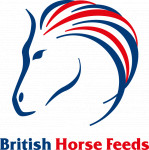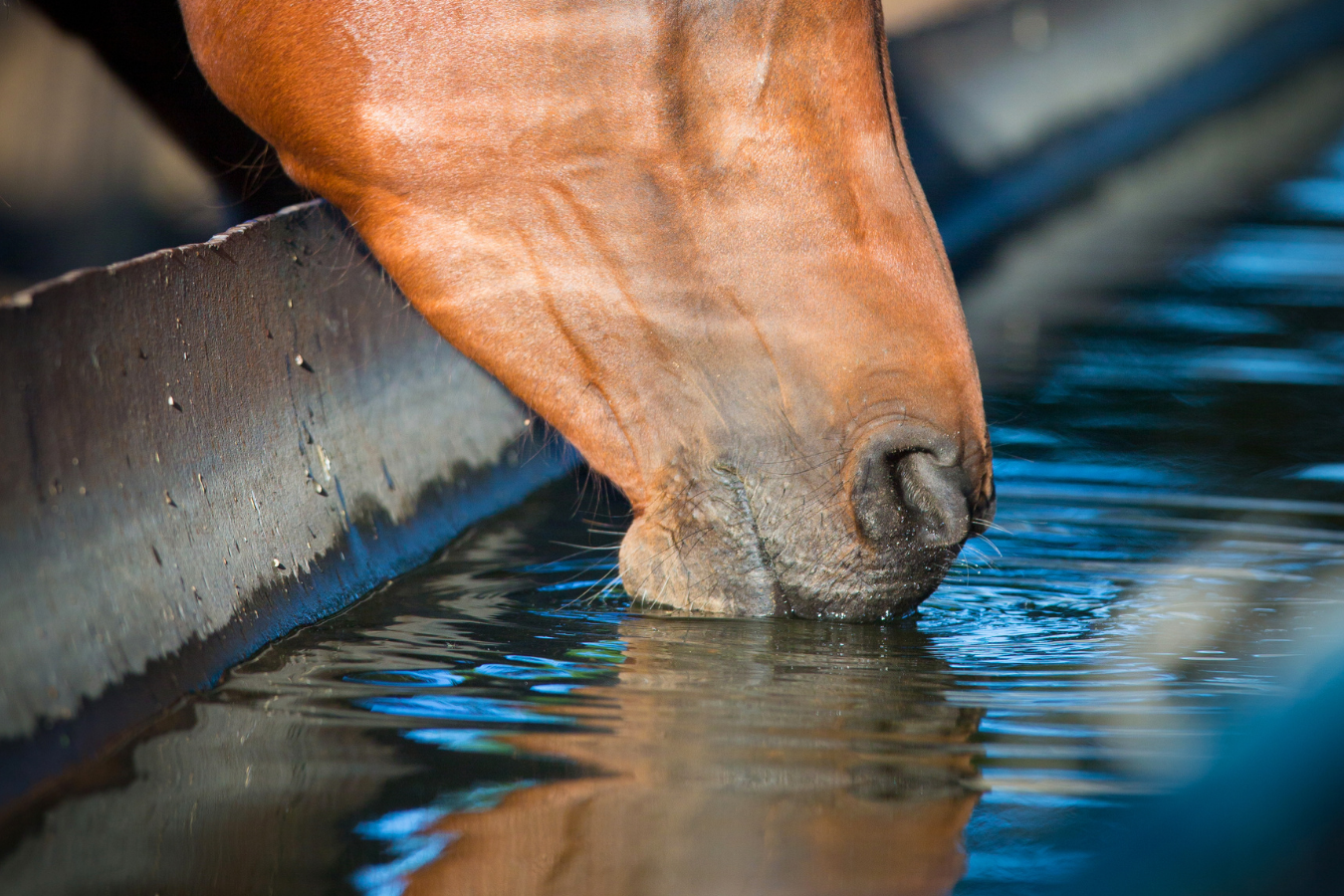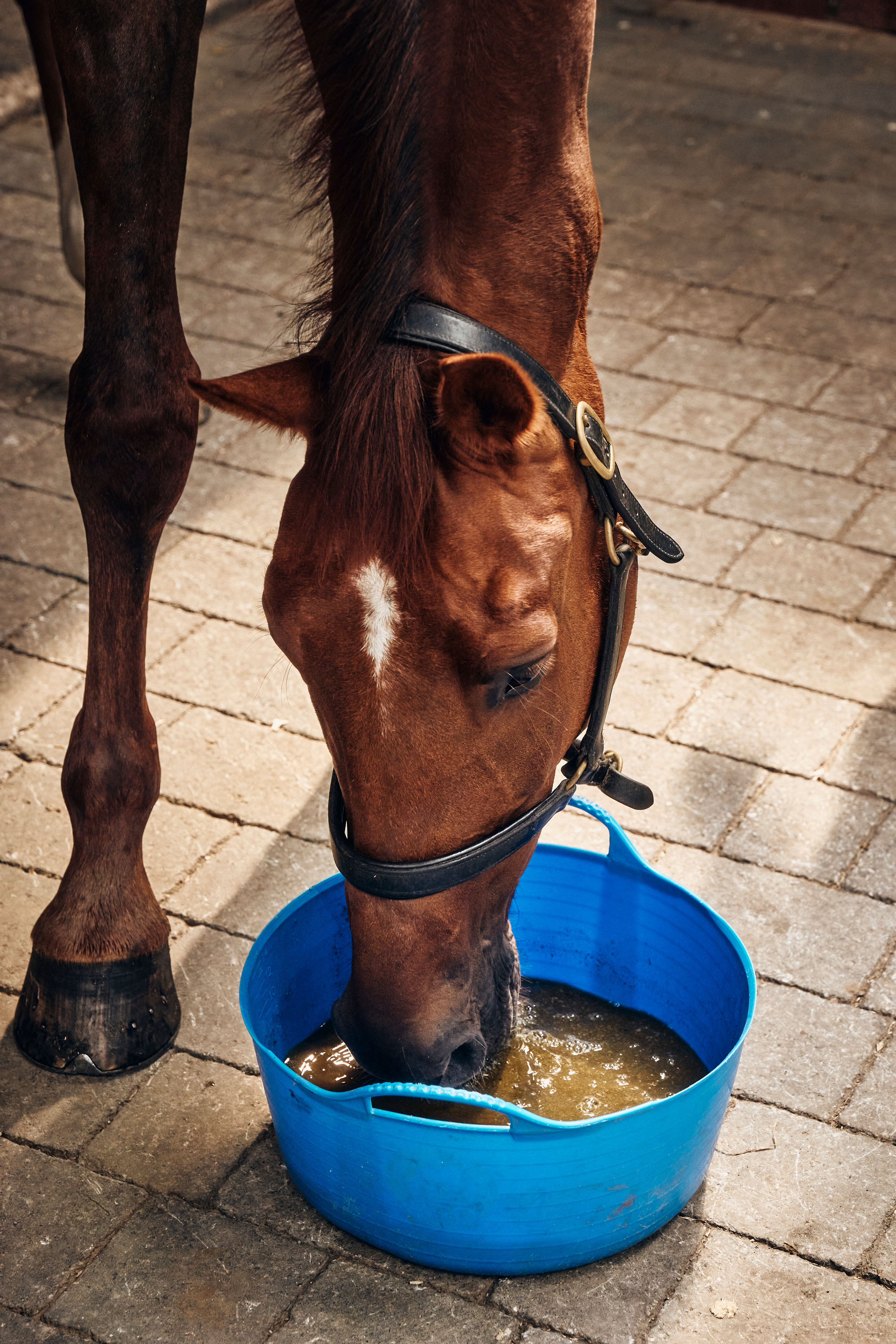Posted: 6th July 2022 | Back to news feed

British Horse Feeds consultant nutritionist, Dr Tom Shurlock, talks about dehydration and how it can impact on the horse. He offers some tell-tale signs and gives some advice on how we can aid hydration through nutrition.

Possibly one of the most unnoticed disorders in the horse is dehydration. Obviously, after exercise, or on a hot day, we are aware that horses need extra water and a full drinker is always available. What may be less obvious is that horses, for whatever reason, may not be drinking enough.
Dehydration does not solely occur through water loss, mainly through the skin as sweat. If water intake is less than water loss, then dehydration occurs.
This balance may be affected by any number of factors. Obvious moisture loss is down to exercise, or a hot day but equally a cold day can have implications; the body responds to cold weather by reducing blood flow to the subcutaneous areas and this is accompanied by fluid loss via the urine. If the horse doesn’t increase fluid intake, dehydration can follow.
Other factors, such as stress, changes in routine or even diet can affect water intake and potentially cause the horse to be dehydrated.
We know how much a horse eats, whether it is in good condition, whether it finishes its haynets etc., but do we know how much water it takes in? With constant access to water, there shouldn’t be a problem, but we need to be aware of the tell-tale signs of dehydration.
The Signs
These include lethargy, depression, dullness in the eyes, dry skin and mouth, thick and sticky saliva or dark looking urine.
Lethargy: Where behaviour is not normal, when the horse is dull and listless, or where its performance is below expectations, then the horse is lethargic.
Depression: Similar to lethargy but with the added symptom of being disinterested in normal routines. A lack of greeting, not wanting to be turned out, no interest in surroundings – all are signs of depression.
The other signs are self-explanatory, and are indicative of a more progressive dehydration.

How to test for Dehydration
Traditionally, there is the skin and the gums test. The former, also known as the pinch test, is simply a matter of pinching a fold of the skin ideally at the point of the shoulder, and seeing how long it takes to return to its original position.
The gum test is somewhat similar (and again assessed during the scientific trial). Check the gums; if they feel slimy, the horse is hydrated, if tacky then there is some dehydration. Press the gum to see how quickly the white indentation reverts back to pink normality (Capillary test). Over two seconds and there is likelihood that there is dehydration.
Having said all this, it is fairly safe to assume unless extreme circumstances occur that major dehydration is not an issue in everyday life. But even mild dehydration can causes metabolic issues, so keeping the horse fully hydrated is always the best policy. But sometimes providing a full bucket, or drinker, is not the best way forward.
There are reports from racing stables that the first thing a returning racehorse does is eat, not drink. And there is another aspect of dehydration that has been scientifically investigated – sometimes dehydrated horses will not drink! And those that did may not have fully rehydrated.
Horses naturally eat wet feed; grass moisture can be as high as 80% and this is sufficient to keep a grazing animal hydrated. Conditions such as those already mentioned may increase a horse’s water needs, whilst others may depress water intake.
For example, endurance races often have a situation where a resting horse declines water but will take a sloppy feed before resuming. Like those racehorses the action of eating appears preferable to drinking; perhaps we should take this into consideration when rehydrating our horses.
Using a product like Speedi-Beet or Fibre-Beet provides guaranteed hydration whilst also offering the benefits of a fibre feed, and so water is ingested through the gut.
You can add more water to Speedi-Beet and Fibre-Beet if needed to encourage horses to drink more or even use them to make flavoured water. This is great at events when normal routines are disrupted.
Did you know…
Speedi-Beet expands to 5x and holds 5 times its weight in water and Fibre-Beet expands to 3x and holds 3 times its weight in water.
For more information on the British Horse Feeds products visit www.britishhorsefeeds.com or contact the team on 01765 680300.
The Equestrian Index newsfeed is compiled from articles submitted by advertising members and expresses the opinions of those members. Watsons Directories Ltd shall not be held liable for any inaccuracies or mis-statements therein.